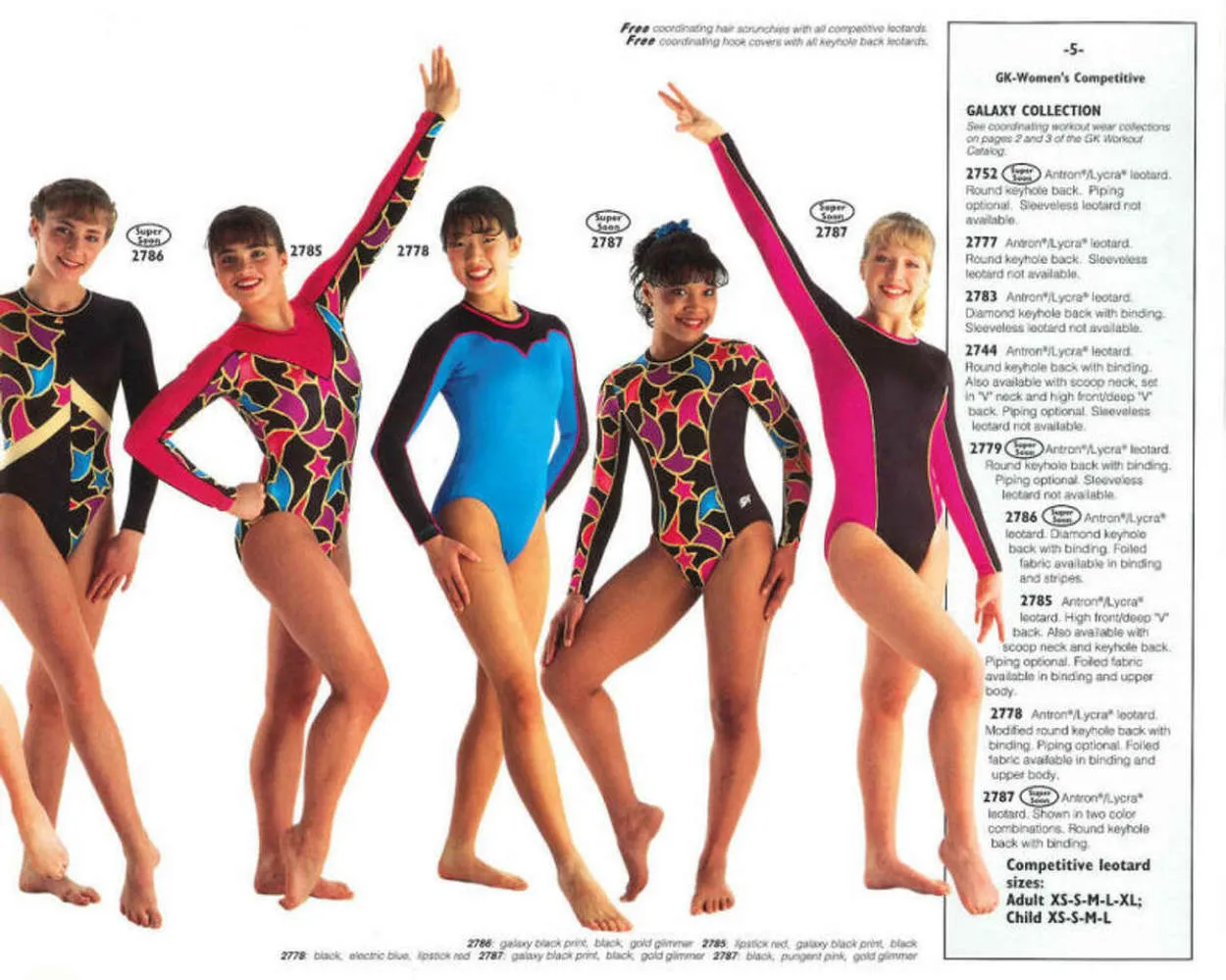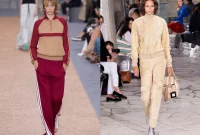Gymnastics wear has come a long way, from the traditional leotards to the modern tracksuits. This evolution reflects the changing demands of the sport, focusing on both style and functionality. Let’s delve into the intriguing journey of gymnastics attire and how it has revolutionized over time.
Historical Overview of Gymnastics Attire
Gymnastics, as an athletic discipline, has a rich history spanning over thousands of years. Throughout its evolution, gymnasts’ attire has undergone significant changes to accommodate the sport’s demands for both performance and aesthetics. Let’s take a closer look at the historical development of gymnastics wear.
Ancient Origins
In ancient Greece, the birthplace of gymnastics, athletes participating in gymnastic events competed in the nude. This practice emphasized the idealized human form and the purity of the sport. As time progressed, however, modesty became a more significant concern, leading to the introduction of simple garments.
The Rise of Leotards
Leotards, a one-piece skin-tight garment, gained popularity in the 19th century as gymnastics became more structured and formalized. Initially, leotards were made of wool or silk and were primarily worn by women. Their design allowed for unrestricted movement and showcased the gymnast’s physique.
Masculine Influence
In the early 20th century, male gymnasts started to embrace different types of attire. Shorts and tight-fitting tank tops or singlets became the norm for men, providing optimal flexibility and comfort. This shift reflected the growing recognition of men’s gymnastics as a distinct discipline.
Technological Advancements
With the introduction of synthetic materials in the mid-20th century, gymnasium wear underwent significant transformations. Nylon, Lycra, and spandex became the fabrics of choice due to their stretchability and sweat-wicking properties. These advancements enhanced performance and allowed for greater artistic expression.
The Modern Era
Today, gymnastics attire encompasses a wide range of options. Female gymnasts primarily wear leotards made from high-tech fabrics adorned with intricate designs, while male gymnasts commonly opt for shorts and form-fitting tops. Additionally, both genders may wear tracksuits for warm-ups and training.
Continuing Evolution
The evolution of gymnastics attire is an ongoing process, influenced by factors such as fashion trends, technological innovations, and safety considerations. As the sport continues to evolve, we can expect further developments in gymnastics wear, ensuring that athletes have the optimal gear to support their performance and showcase their skills.
The Transformation of Gymnastics Tracksuits
Gymnastics wear has come a long way over the years, with the evolution of designs and styles reflecting the changing needs and preferences of athletes. From the traditional leotards to the introduction of tracksuits, the gymnastics apparel industry has witnessed a significant transformation.
Tracksuits have gained popularity in gymnastics due to their practicality and functionality. They provide athletes with enhanced comfort, flexibility, and freedom of movement during training and competition. The introduction of tracksuits has revolutionized the world of gymnastics, offering athletes a modern and trendy alternative to traditional leotards.
Modern gymnastics tracksuits are made from high-performance fabrics that are breathable and moisture-wicking, keeping athletes cool and dry throughout their active routines. They are durable and stretchable, allowing gymnasts to perform their routines with ease and confidence. Tracksuits also offer added protection against injuries by providing a layer of padding and insulation.
Not only are gymnastics tracksuits functional, but they also reflect the ever-changing fashion trends. They come in a wide range of colors, patterns, and designs, allowing athletes to express their personal style. Tracksuits with vibrant colors and bold prints have become particularly popular among gymnasts, adding a touch of excitement and individuality to their performances.
The transformation of gymnastics wear from leotards to tracksuits has not only revolutionized the athletes’ experience but has also influenced the perception of the sport. The introduction of tracksuits has made gymnastics more inclusive, breaking away from the traditional stereotype of leotards being the only acceptable attire. It has opened the door for athletes from diverse backgrounds and body types to feel comfortable and confident in the sport.
In conclusion, the evolution of gymnastics wear has seen the rise of tracksuits as a practical, fashionable, and inclusive option for athletes. The transformation from leotards to tracksuits has not only enhanced the performance and comfort of gymnasts but has also expanded the boundaries of traditional attire in the sport.
Combining Aesthetics and Functionality
Gymnastics wear has come a long way since its early days. From traditional leotards to the rise of tracksuits, the evolution of gymnastics apparel has been driven by the desire to combine aesthetics and functionality.
In the early years of gymnastics, leotards were the go-to choice for athletes. These one-piece bodysuits not only provided flexibility and freedom of movement but also allowed judges to easily assess body alignment and form. However, as the sport grew in popularity, athletes started looking for ways to showcase their personal style and express their individuality.
This desire for self-expression led to the introduction of more colorful and creative leotard designs. Gymnastics wear began to feature vibrant patterns, sparkling crystals, and unique cutouts, allowing athletes to stand out and make a statement. Aesthetics became an integral part of gymnastics performances, with athletes using their outfits to enhance their routines and captivate the audience.
However, as gymnastics routines became more challenging and acrobatic, athletes also needed attire that could support their movements and provide adequate protection. This need for functionality gave rise to the popularity of tracksuits in gymnastics. Tracksuits offer a balance between style and practicality, allowing gymnasts to warm up effectively and move freely without compromising their performance.
Tracksuits, often made from lightweight and breathable materials, provide the necessary flexibility and comfort for gymnasts to perform their routines seamlessly. They also offer additional benefits such as moisture-wicking properties, ensuring athletes stay dry and focused during their training sessions or competitions.
The evolution of gymnastics wear continues to evolve, with designers constantly pushing the boundaries of creativity while prioritizing the needs of the athletes. Today, gymnastics apparel encompasses a wide range of styles and designs, reflecting the individuality and preferences of each gymnast. Whether it’s a dazzling leotard or a sleek tracksuit, the goal remains the same: to combine aesthetics and functionality, allowing gymnasts to excel in both style and performance.
The Role of Technology in Gymnastics Wear
Gymnastics wear has significantly evolved over the years, transitioning from traditional leotards to modern tracksuits. This evolution has been accompanied by the integration of advanced technologies that greatly enhance the performance and comfort of gymnasts. Technology plays a vital role in improving various aspects of gymnastics wear, including design, material, and functionality.
Enhanced Design
Technological advancements have revolutionized the design of gymnastics wear. Manufacturers now utilize 3D modeling software to create intricate designs that allow for better movement and flexibility. These designs are specifically tailored to meet the unique biomechanical requirements of gymnastic routines, ensuring optimal performance during complex movements.
Innovative Materials
With cutting-edge technology, gymnastics wear now incorporates innovative materials that enhance the overall performance of athletes. Fabrics with moisture-wicking properties help regulate body temperature and keep gymnasts dry, even during intense training sessions. Additionally, the introduction of stretchable and breathable materials enhances comfort and allows for a greater range of motion.
Improved Functionality
Technology has also led to significant improvements in the functionality of gymnastics wear. Integrated sensors and microchips embedded in the fabric can provide real-time data on an athlete’s body movements, posture, and muscle fatigue. This data can be used to optimize training programs, prevent injuries, and enhance performance. Furthermore, advancements in stitching techniques and ergonomic design ensure that gymnastics wear provides adequate support and stability during intense routines.
The role of technology in gymnastics wear cannot be overstated. It has not only revolutionized the design and functionality of these garments but also contributes to the overall performance and safety of gymnasts. As technology continues to advance, we can expect further innovations in gymnastics wear that will push the boundaries of what is possible in this highly demanding sport.
Iconic Gymnastics Outfits in History
Gymnastics outfits have come a long way throughout history, evolving from simple attire to showcase vital elements of the sport, enhance performance, and express individuality. Let’s take a look at some iconic gymnastics outfits that have left a lasting impression:
1. Mary Lou Retton’s Leotard
In the 1984 Olympics, Mary Lou Retton captured the hearts of fans worldwide with her gold medal-winning performances. Her patriotic red, white, and blue leotard became an iconic symbol of her triumph and represents the grace and strength of gymnasts.
2. Nadia Comaneci’s Unitard
In the 1976 Olympics, Nadia Comaneci became the first gymnast to score a perfect 10. Her white unitard with red and blue stripes became instantly recognizable. The outfit blended athleticism and elegance, setting new standards for gymnastics wear.
3. Kerri Strug’s Tracksuit
Kerri Strug’s performance in the 1996 Olympics is revered in gymnastics history. Her iconic moment was captured in a white tracksuit, worn to protect her injured ankle during the final vault. This outfit showcases the dedication and determination of gymnasts.
4. Simone Biles’ Sparkling Leotards
Simone Biles, one of the greatest gymnasts of all time, is known for her dazzling and vibrant leotards. These outfits are adorned with sequins, glitter, and unique designs, reflecting Biles’ confidence and artistic flair.
5. Olga Korbut’s Pigtails and Red/White Leotard
Olga Korbut’s performances in the 1972 Olympics captivated audiences around the world. Her signature pigtails and the red and white leotard became her trademark and made her instantly recognizable. Korbut’s outfits embodied the joy and youthful spirit of gymnastics.
These are just a few examples of iconic gymnastics outfits that have left their mark on the sport. From leotards representing patriotism and elegance to tracksuits showcasing resilience and individuality, gymnastics wear continues to evolve alongside the athletes, becoming an integral part of the sport’s history and identity.
Conclusion
The evolution of gymnastics wear has witnessed a significant shift from traditional leotards to the more practical and versatile tracksuits. This transition has not only provided gymnasts with increased comfort and freedom of movement but has also allowed for more personal expression through various designs and styles. As gymnastics continues to evolve as a sport, it is likely that the future will bring even more innovative and functional designs to enhance the performance and presentation of gymnasts.




